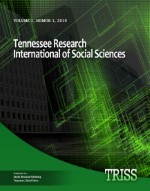Green tourism destination product differentiation: Effect on visit satisfaction in Gili Trawangan
Keywords:
green tourism destination, visiting satisfaction, green tourism, destinationAbstract
The practice of green tourism destinations means sustainability of the environment, culture and community at the tourist locations visited. The aim of this research is to determine the effect of green tourism destination product differentiation on visiting satisfaction on Gili Trawangan. The sample in this study used 80 respondents. The data analysis technique used is multiple linear regression analysis technique. The results of this research found that differentiation of green tourism destination products consisting of features and performance has a significant influence on satisfaction with visiting Gili Trawangan Island, both simultaneously and partially. This shows that the level of importance expected by visitors with the level of performance of the features provided to visitors has a high level of suitability, in the sense that the performance of the features can almost meet the level of interest of tourists when compared with the performance.
Downloads
References
Kotler, Philip dan Amstrong, Garry. (2011). Principle of Marketing Edition. New Jersey: Prentice Hall Inc. Kotler, Philip & Amstrong, Gary. 2009. Principles of Management. 13nd Edition. Penerbit Pearson Prentice Hall. New Jersey.
Kotler, Philip dan Amstrong, Garry. (2008). Principle of Marketing, 11th Edition. New Jersey: Prentice Hall Inc. Kotler, Philip & Keller, Kevin. 2011. Marketing Management. 14th Edition. Penerbit Pearson Prentice Hall. New Jersey.
Kotler, Philip & Keller, Kevin. (2009). Marketing Management. 13rd Edition. Penerbit Pearson Prentice Hall. New Jersey.
Kotler, Philip. (2008). Marketing Management. New Jersey: Prentice Hall.
Mason, Robert, D. (2000). Teknik Statistika Untuk Bisnis dan Ekonomi, Edisi Kesembilan, Erlangga, Jakarta Mohammad Nazir. 2006. Metodologi Penelitian. Jakarta: Ghalia Indonesia.
Mowen, Jhon C. dan Michael Miror. (2005). Perilaku Konsumen. Jakarta: Erlangga.
Oka A. Yoeti. (2005). Ekonomi Pariwisata. Penerbit Kompas. Jakarta.
Pendit, Nyoman S. (2006). Ilmu Pariwisata Sebuah Pengantar Perdana. Jakarta: PT Pradnya Paramita.
Sugiyono. (2010). Metode Penelitian Bisnis, Bandung: Alfabeta.
Suswantoro (2007) Dasar-dasar pariwisata, Yogyakarta: Andi.
Special Report. (2002). The U.S. Ecotourism Market, WTO. Tourism and Hospitality Management, Vol. 13, No. 3, pp. 547-556, 2007
P. Curtis, J. Mylonakis, T. Ktenidis. (2010). Tourism Product Differentiation Strategy The Turkish Tourism Product: Differentiation and Competitivenes. Anatolia: An International Journal of Tourism and Hospitality Research Volume 21, Number 1, pp. 89-106.
Tjiptono, Fandy, Chandra, Gregorius. (2005). Service, Quality, and Satisfaction. Yogyakarta: Andi.
The Safein Herit Network workshop report. (2001). Green Tourism, Norway.
Uma Sekaran. (2006). Research Methods For Business. Edisi 4. Jakarta: Salemba Empat.
Victor T.C. Middleton, Alan Fyall & Michel Morgan. (2008). Tourism Product development.
Weaver, David & Laura Lawton. (2006). Tourism Management: Third Edition. Australia: John Wiley & Sons Australia, Ltd.
Downloads
Published
How to Cite
Issue
Section
License
Copyright (c) 2024 Tennessee Research International of Social Sciences

This work is licensed under a Creative Commons Attribution-NonCommercial-NoDerivatives 4.0 International License.
Articles published in the Tennessee Research International of Social Sciences (TRISS) are available under Creative Commons Attribution Non-Commercial No Derivatives Licence (CC BY-NC-ND 4.0). Authors retain copyright in their work and grant TRISS right of first publication under CC BY-NC-ND 4.0. Users have the right to read, download, copy, distribute, print, search, or link to the full texts of articles in this journal, and to use them for any other lawful purpose.
Articles published in TRISS can be copied, communicated and shared in their published form for non-commercial purposes provided full attribution is given to the author and the journal. Authors are able to enter into separate, additional contractual arrangements for the non-exclusive distribution of the journal's published version of the work (e.g., post it to an institutional repository or publish it in a book), with an acknowledgment of its initial publication in this journal.



